Estimated reading time: 7 minutes
We’re big fans of almond and other nut trees in gardens. In fact, we have 4 different almond varieties in our garden to make sure we get a good crop every year. They’re a great tree to include if you’re trying to grow as much food for your family as possible.
They’re handy as sources of both plant-based protein and oil. This makes them a staple tree to include if you’re trying to create a permaculture system.
Every garden needs an almond tree
Even though they’re not really fruit, almonds are definitely one of the trees to consider when you’re deciding what to plant.
Apart from the orchards on our farm, we also have a pretty big garden. We grow a wide variety of fruit and nut trees, including 8 almond trees (2 each of 4 different varieties) under netting.
Having a number of different varieties takes care of pollination. It also gives us a bit more security—if one variety doesn’t crop well, another one usually has a bumper crop. It’s a rare year we have no almonds at all.

When are almonds ready to pick?
You can tell when almonds start to ripen because the husks open up, as you can see above. This exposes the shell underneath (and the almond nut is inside the shell).
The other indication they’re ready is that some will have fallen from the tree to the ground.
The third test is to eat a couple of almonds and see how they taste. They should have lost their starchy taste and be pleasant to eat raw. It’s normal for them to be quite soft at this stage, and completely different to the hard almonds you buy at the shop.
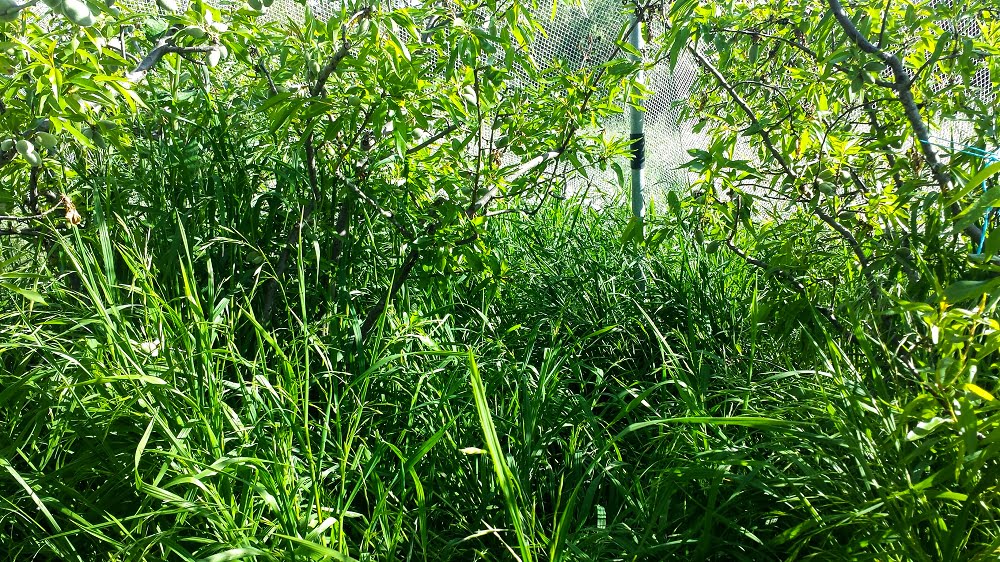
Make the job of picking up fallen almonds easier
In past years we’ve found fallen almonds are a pain to find in the grass. This is particularly true if we’ve let it grow quite long underneath the almond trees (which we’ve been guilty of, many times).
There are plenty of solutions to out-of-control long grass, but it’s a matter of finding the right one for you. We’ve attempted various options to turn the jungle into a more controlled understorey.
Options we’ve tried (so far) have included the following treatments.
- pulling out weeds and using them as mulch
- pulling out weeds, laying newspaper and compost as mulch
- cutting the weeds short, then covering them with newspaper and compost
- cutting weeds short.
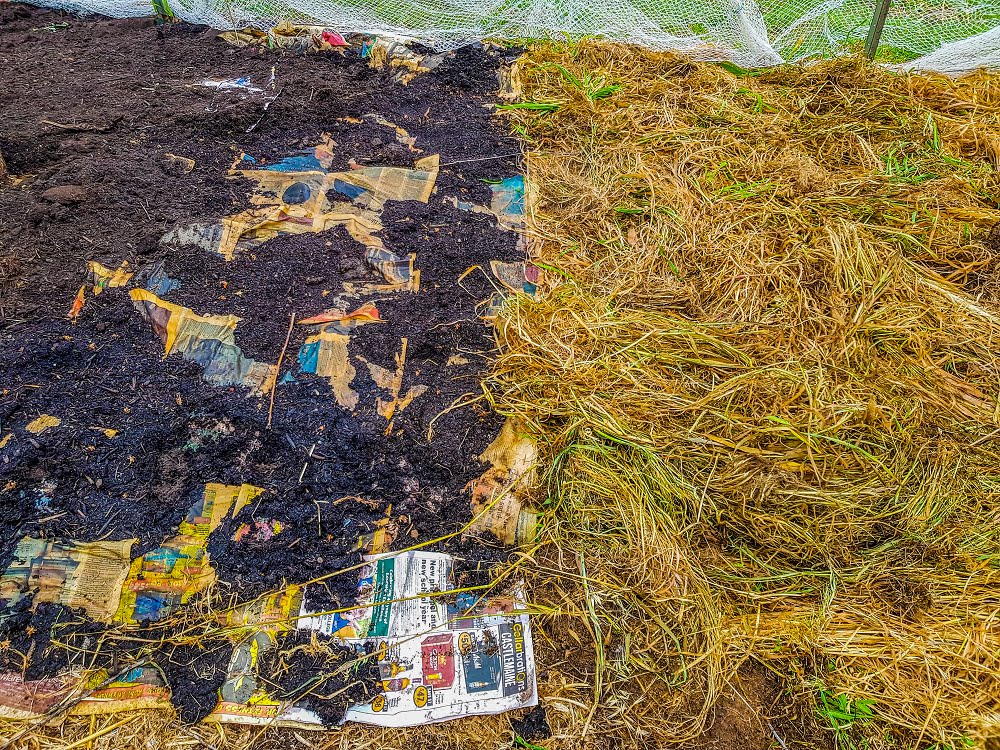
Creating understory beneath almond trees
The ultimate goal is to create a beautiful and diverse understory garden beneath our fruit trees. This is the best outcome for the soil and creating healthy soil to feed the trees.
Each treatment was followed with planting understory plants (eg marigolds) into the mulch/weeds. To date, we’ve had varying degrees of success in terms of (a) getting understorey plants established, and (b) keeping the weeds (especially couch grass and kikuyu) under control.
The big take-away lesson?
The key is to follow up on any treatment regularly! Weeds just love to come back and fill a vacuum, so unless you are regularly topping up the mulch, tending the understory plants, and replacing them when necessary, it’s a pointless exercise.
However, one thing that worked was mowing the long grass before harvest time. This makes the process of picking up fallen nuts from the ground much easier.
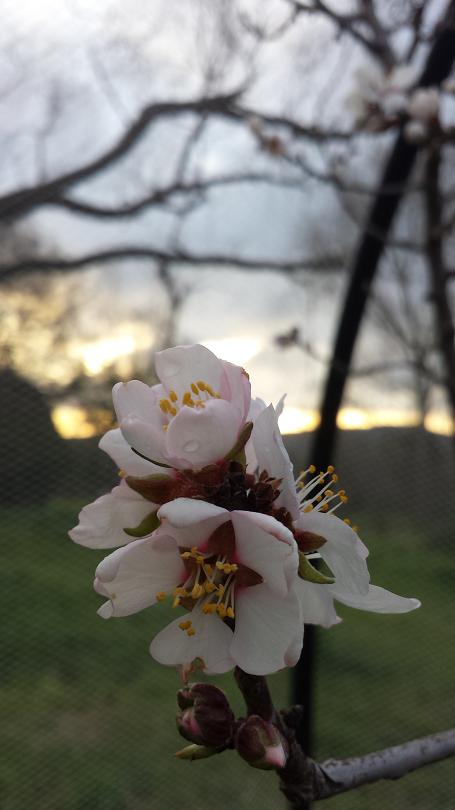
What do you do with almonds after you’ve picked them?
After we’ve picked, we remove the husks before we store the nuts. We store them in the pantry and only shell the nuts as we need them through the year. They stay much fresher in the shell.
Our eight trees supply us with enough nuts for eating all year. Plus we grind some into almond meal to use in cooking, as we make a lot of gluten-free meals.
Our small almond block is planted in 2 rows, with 2 trees each of 4 different varieties.
Like so many other well-meaning but vague gardeners, we lost the labels. Yep, that means that we don’t know which variety is which. This is one of the things we caution against in our Grow Great Fruit program — so please, do as we say, not as we do!
The first photo (below) is variety 1, which we think is Canadian Papershell.
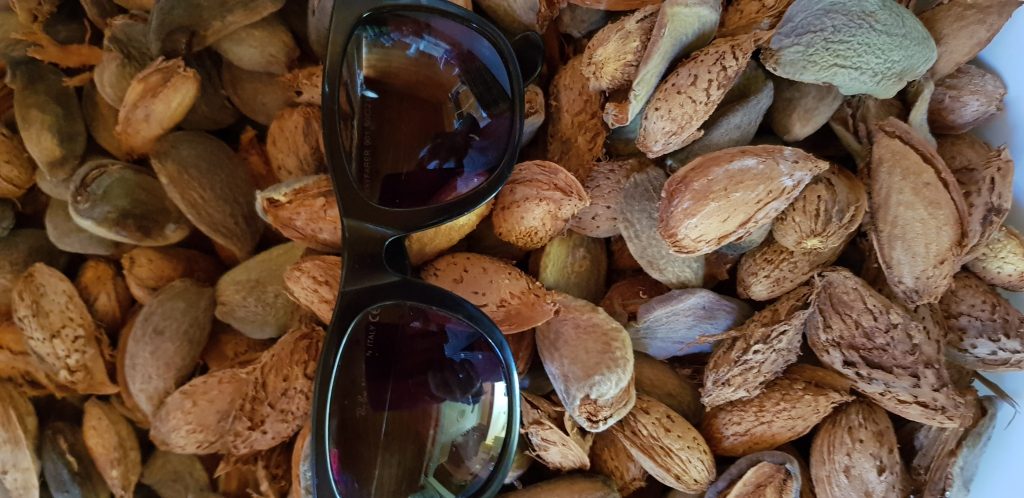
Identifying different almond varieties
We’ve previously attempted to identify the different varieties. If you look closely at the photos of these three varieties, you’ll see they’re all quite different.
We planted pollinisers next to each other, so variety 2 (below) is probably either Ne Plus Ultra, Mission, or IXL (as they are pollinisers of California Papershell).
Ne Plus Ultra has very large kernels, and as you can see from the photo (the sunnies are there to give a size comparison between varieties), #2 is much smaller than #1, so that rules out Ne Plus Ultra.
It’s more likely to be Mission, which yields relatively small kernels.
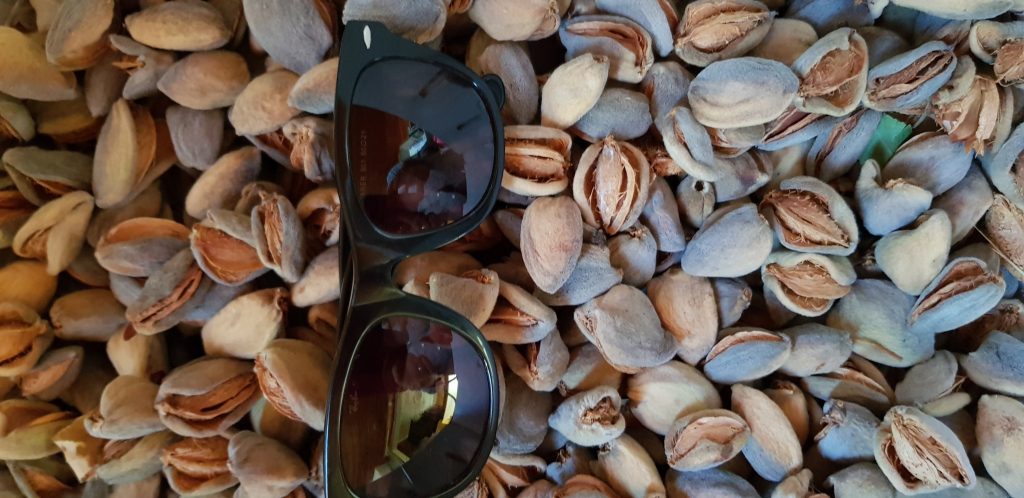
Detective work in the almond orchard
Varieties #3 (in the photo below) and #4 (no photo because there was no crop this year) were also chosen because they pollinise each other. The likelihood is that they are Brandes Jordan and Chellaston, but we have no idea which is which.
Over the years we’ve realised that it doesn’t matter. They ripen close enough to the same time to be able to pick them all together. They’re all delicious and are all similar in the way they store and taste.
So we’ve forgiven ourselves for the label lapse.
But we do recommend that you keep better records than we’ve managed to!

Related Articles
How to grow your own multigraft or fruit salad tree
Multigraft trees are a no-brainer for many gardens, as they reduce risk and provide a bigger variety of fruit, without taking up more space.
Saving heritage fruit trees by planting them
Many heritage fruit tree varieties are in danger of going extinct. The best way to save them is by planting them in your backyard.
What do you think about growing pears?
Pears have gone out of fashion, but they’re actually easy to grow, delicious, and versatile – a fantastic addition to your garden.

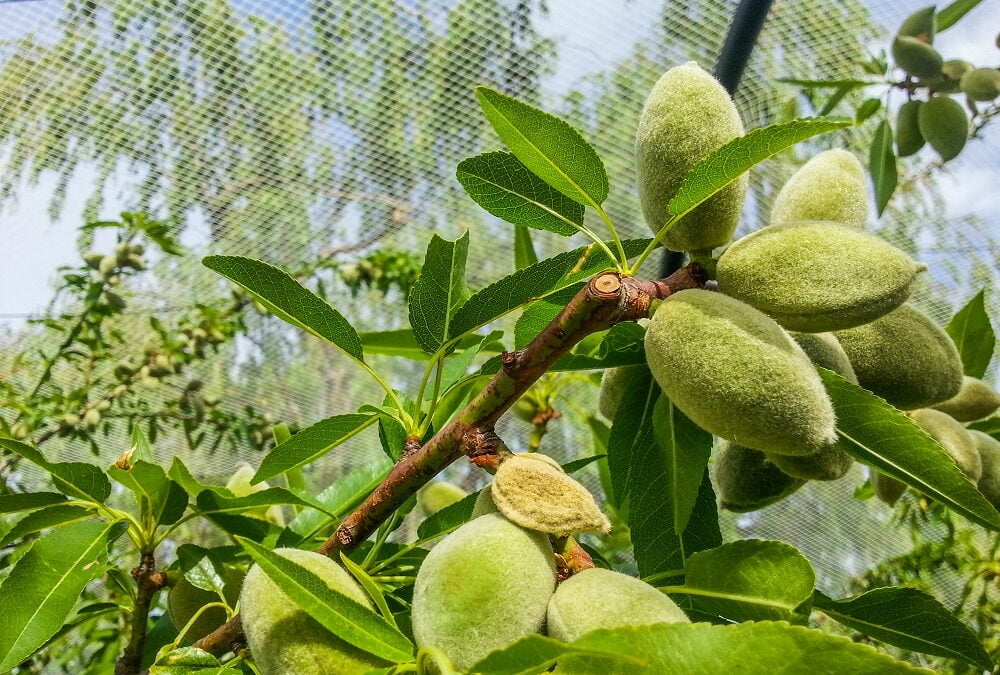

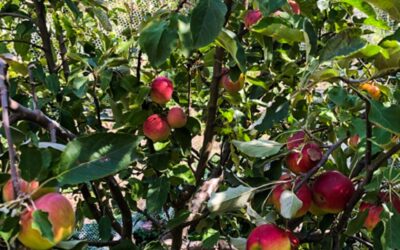

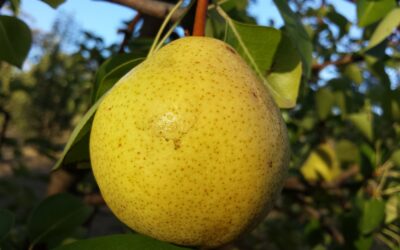


Hi Katie,
Thanks for the info on almonds. Do you know if almonds have a bigger harvest one year and a smaller one the next year? I didn’t get any almonds this year despite a lot of flowers. Last year was its first year and it was a good crop.
Ta
Dy
Hi Dy, we’re not almond experts, but have noticed slight variations. As they’re deciduous fruiting trees in the same family as peaches you’d expect the same tendency to biennially bear as peaches (and other deciduous fruiting trees) show. We manage it in the peaches with annual fruit thinning to ensure return bloom, but haven’t tested this on the almonds sorry. Start monitoring and recording more closely, and if you notice biennial bearing then it’s even worth doing an experiment the next time they have a heavy crop – pull off some of the crop just after flowering and see whether it influences the following year’s crop. Good luck!
Any tips on pruning almonds when you’re trying to keep the tree to a manageable size but don’t want to sacrifice most of the crop? My ‘dwarf’ All in one paper shell is thriving but at 4 years it’s already triple the advertised 1.5m height with so much vegetative growth….
Hi Caroline, yes we do! Treat it like a peach tree or any other fruit tree – make a ‘thinning’ cut to reduce the height of the limbs, rather than a ‘heading’ cut, i.e. find a lateral (or side branch – preferably an upright one, not horizontal) that finishes at the new height you want and remove the branch above that lateral. This will leave the apical bud (i.e. the bud at the end of the side branch that you’re choosing as the new ‘leader’ of the limb) as the dominant bud, which helps to reduce excessive branching at the top of the limb. Have you done our free webinar? Pruning is one of the 5 Key Steps we explain in it – here’s the link: https://growgreatfruit.com/webinar-landing/
Hi, do you know what nut trees I can grow successfully in South East Queensland?
Hi Ange – it totally depends on where you are, where you can grow deciduous trees (like almonds, pistachios and walnuts) depends on your local climate, altitude etc. Maybe chat to some growers at your local farmers market, talk to local nurseries, garden groups etc. and see who’s doing what in your area. There’s an increasing choice of low-chill varieties available now as well which will help. And of course you should be able to grow the wonderful macadamia and pecans. Good luck with your edible garden!
Hi, my daughter picked our almonds before they fully opened, only 1-2mm split. Will they ripen and split open properly once picked. Thank you.
Hi Darren, It’s likely that your almonds are going to be green and inedible. They really should be allowed to dry out on the tree after they have fully split open – so if yours have only just started to split open they have been picked several weeks too early. You could try air drying them by laying them out somewhere with good venitlation, but it may not give you a great result.
Thanks for the information on Almonds and Pears – the almond tree is full of nuts, my pear tree is just new but growing tall. Last year we had an abundance of peaches and the tree appears to have a lot of peaches growing. Do you have information on growing bring cherries – young tree. My apricot tree fruit is starting to ripen and I have covered it with net to keep the birds and squirrels away. Do you also have information on Kiwi & Mango? My apple is green but not bearing fruit yet. Citrus does wonderful in S. Calif.